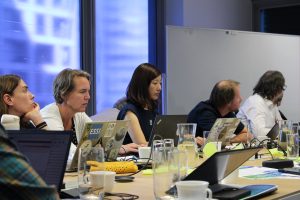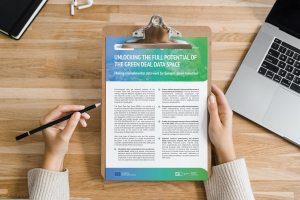
Welcome back to our interview series, where we connect with the brilliant minds behind the AD4GD project. Today, we’re speaking with Pawel Babalski, a key member of the Poznan Supercomputing and Networking Center (PSNC) team.
Pawel is currently in his fifth semester of undergraduate studies in Automatic Control and Robotics at Poznan University of Technology. For the past year, he has been an invaluable asset to the AD4GD project. We spoke with him to learn more about his background and his significant contributions.
What aspects of your studies are you most passionate about?
I’m most passionate about data analysis and computer vision, especially things like image recognition.
How did you get involved with PSNC and the AD4GD project?
I started with an internship at PSNC while I was in technical high school and later began a part-time job here. About a year ago, my colleague Raul introduced me to the AD4GD project, and that’s how I got involved.
What has been your main contribution to AD4GD?
My main contribution has been the SensorThings API (STA) generation service. It’s a tool used to automatically generate APIs based on a user-provided dataset. These APIs adhere to the OGC SensorThings API standard, which is designed for Internet of Things devices and sensors. Essentially, the service takes the user’s data about their sensors and observations and creates a standardized API to display that data and the relationships between different components.
How does this service help an end-user?
It makes creating a standardized API much easier. Instead of building an entire API from scratch, a user only needs to provide the URIs to their data graphs and a name for their API. The service then automatically generates the API for them. The main objective is to help users easily conform to the STA standard without having to do all the complex work themselves.
What was the most significant lesson you learned while working on this project?
The most important thing was learning so much about semantic data; I feel quite confident with it now. I also learned a lot about SPARQL. On the technology side, our STA generation service was one of the first projects at PSNC to use FastAPI, which has turned out to be a great choice as it’s rapidly growing in popularity.
What was the biggest challenge you faced?
The biggest obstacle was defining a standard for the data we accept. Creating a working API every time is difficult because user datasets can vary so much. We had to set clear boundaries on what data formats and structures are acceptable, and I spent most of my time working on that challenge.
From your perspective, why is the AD4GD project important?
I think the most important part is that we are implementing an open-source standard and making it more accessible. Now, the end-user doesn’t have to write their own API from scratch; they can just use our generation service. It also gave me valuable insights into how geospatial data works, which is another important aspect of the project.
What are your plans for the future?
I plan to stay at PSNC and hope to see this project through to completion, turning it into a whole product. A big part of that will be integrating the STA generation service with other parts of the AD4GD project so that everything works together seamlessly. After that, I hope to participate in similar projects in the future.





